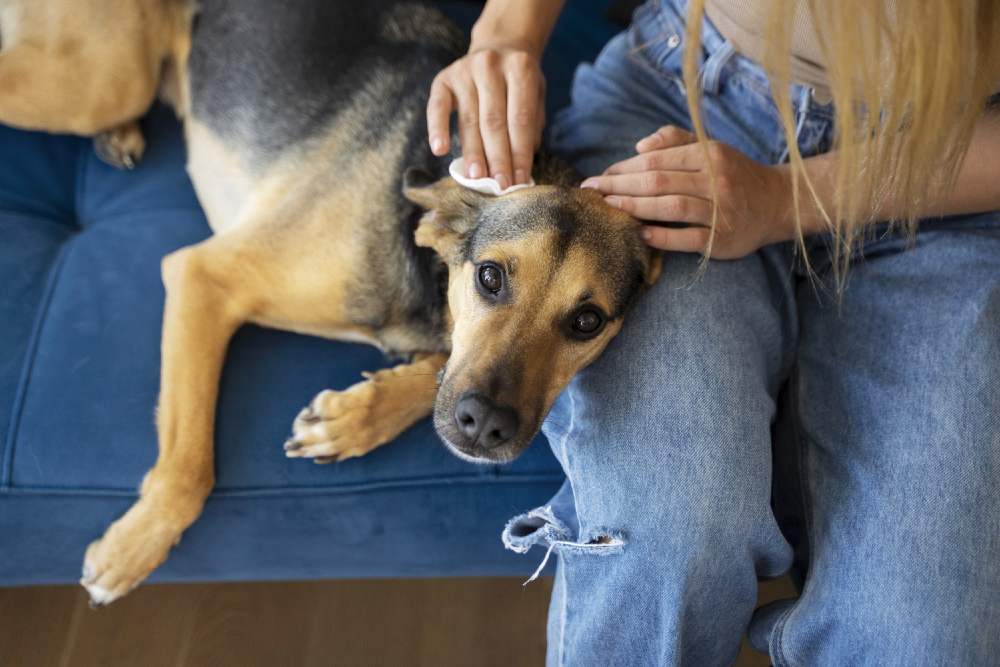Effective Methods for Managing Flea Infestations in Multi-Dog Households
Flea infestations are a common problem pet owners face, but managing such an issue in a multi-dog household can be particularly challenging. These tiny, wingless parasites not only cause discomfort and health issues for your beloved pets but can also infest your home, making them difficult to eradicate.
Moreover, when you have multiple dogs, the risk of infestation increases exponentially, as fleas can quickly transfer from one host to another. Hence, it becomes crucial to manage and prevent these infestations to ensure the health and well-being of your furry friends and maintain the cleanliness of your living space.
To help you manage this problem easily, here are effective methods for managing flea infestations in a multi-dog household.
Facts About Fleas
Fleas, tiny and wingless as they may be, are parasites that survive by feeding on the blood of mammals and birds. These pests are known for their rapid reproduction and resilient nature, which makes them formidable foes for pet owners.
Fleas can cause a range of issues, from mild discomfort due to incessant itching to severe health problems such as flea allergy dermatitis and anaemia, and they can even transmit diseases.
The life cycle of a flea encompasses four stages: egg, larva, pupa, and adult. Depending on environmental conditions, this lifecycle can be as short as two weeks or stretch up to several months. Eggs are often laid on the host and can easily fall off, infesting your home environment.
Flea infestations are as common and problematic as worm infestations in your furry friends, as they can effortlessly jump from one host to another. Just like worm infestations, flea infestations also necessitate prompt treatment. You can overcome this problem by using flea and worm treatment for dogs as your vet prescribes. These products will help you maintain your pets’ health and ensure a healthy environment for them.
Signs of Flea Infestations
Detecting a flea infestation early can save you and your pets from discomfort. Here are five signs to watch out for:
- Excessive Scratching, Licking, or Biting at Skin. Flea saliva irritates most animals, including dogs, causing itching and discomfort. Dogs may react by scratching, licking, or biting their skin more than usual.
- Hair Loss. Persistent scratching and biting can cause hair loss, especially in areas easily accessible to your dog, like the hindquarters or the area above the tail.
- Flea Dirt. These are flea faeces that look like tiny, black or reddish-brown specks. You might notice these on your pet’s coat or in areas where your pet spends time.
- Presence of Fleas. Adult fleas are tiny and brown. Due to their speed, they are difficult to spot. You may see them on your dog or hopping around on your carpet or furniture.
- Changes in Behaviour. Dogs with fleas often become restless and exhibit changes in behaviour, such as increased agitation, decreased appetite, or altered sleep patterns.
Prevention Strategies
Preventing flea infestations is far easier and less stressful than dealing with an active one. Here are some effective strategies:
- Regular Vet Check-ups. Regular visits to the veterinarian are critical in maintaining your dog’s health and catching early signs of flea infestations. Your vet can provide proper advice on flea prevention tailored to your pet’s specific needs.
- Preventive Flea Treatments. Numerous preventive flea treatments are available, including oral medications, spot-on treatments, and flea collars. These treatments not only kill existing fleas but also help prevent new infestations from occurring.
- Cleanliness and Hygiene. Regularly washing your pet’s bedding and vacuuming carpets, rugs, and furniture helps remove any flea eggs or larvae present. Regular pet grooming can also help catch fleas before they become a problem.
- Maintaining a Flea-free Environment. Keep your yard clean and free from debris where fleas might like to hide. Consider using natural flea repellents in your yard, such as cedar chips or certain plants that naturally repel fleas.
- Healthy Diet. A healthy diet can boost your dog’s immune system, making it less appealing to fleas. Some pet owners have successfully added a small amount of garlic or apple cider vinegar to their dogs’ food, which can act as a natural flea deterrent.
Treatment Options
When dealing with flea infestations, there’s a range of treatment options, each with its unique attributes.
Many homeowners turn to natural remedies first. These include diatomaceous earth, essential oils, and vinegar, which can effectively repel fleas. They are safer for pets and the environment. However, their potency may not match other methods, and they may act more slowly.
Another common option is over-the-counter products, which include flea collars, shampoos, powders, and spot-on treatments. These products are effective and readily available at pet stores or online. However, they may contain chemicals that could potentially irritate your pet’s skin or cause other adverse reactions.
Prescription treatments form the third category, and these are typically obtained from your vet. These treatments are usually the most effective option, targeting fleas at all life stages and preventing future infestations. Their main drawback is that they can be more expensive than other options.
Choosing the proper treatment for your dog and your household depends on several factors. The severity of the infestation, your dog’s health, age, breed, and personal preferences all play a role. It’s crucial to consult with your vet before starting any treatment plan. And remember, treating your dog alone won’t eliminate an infestation. You’ll need to treat your entire household, including all pets and the environment, to eradicate the fleas successfully.
Final Thoughts
Managing a flea infestation in a multi-dog household requires a strategic and comprehensive approach. It’s not just about treating the dogs. It involves cleaning the environment and diligently monitoring progress. As responsible pet owners, we must prioritise our pets’ health and well-being by ensuring a flea-free environment. Remember, our furry friends rely on us to keep them safe, healthy, and happy.

